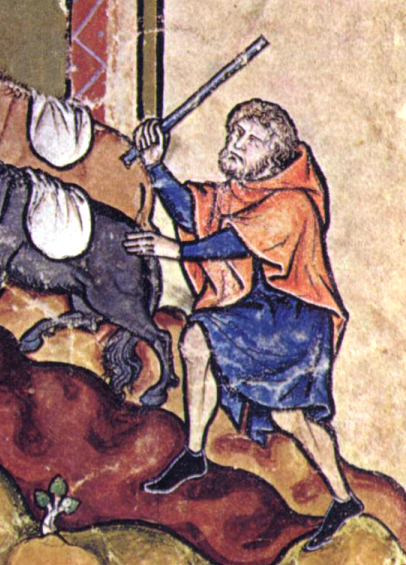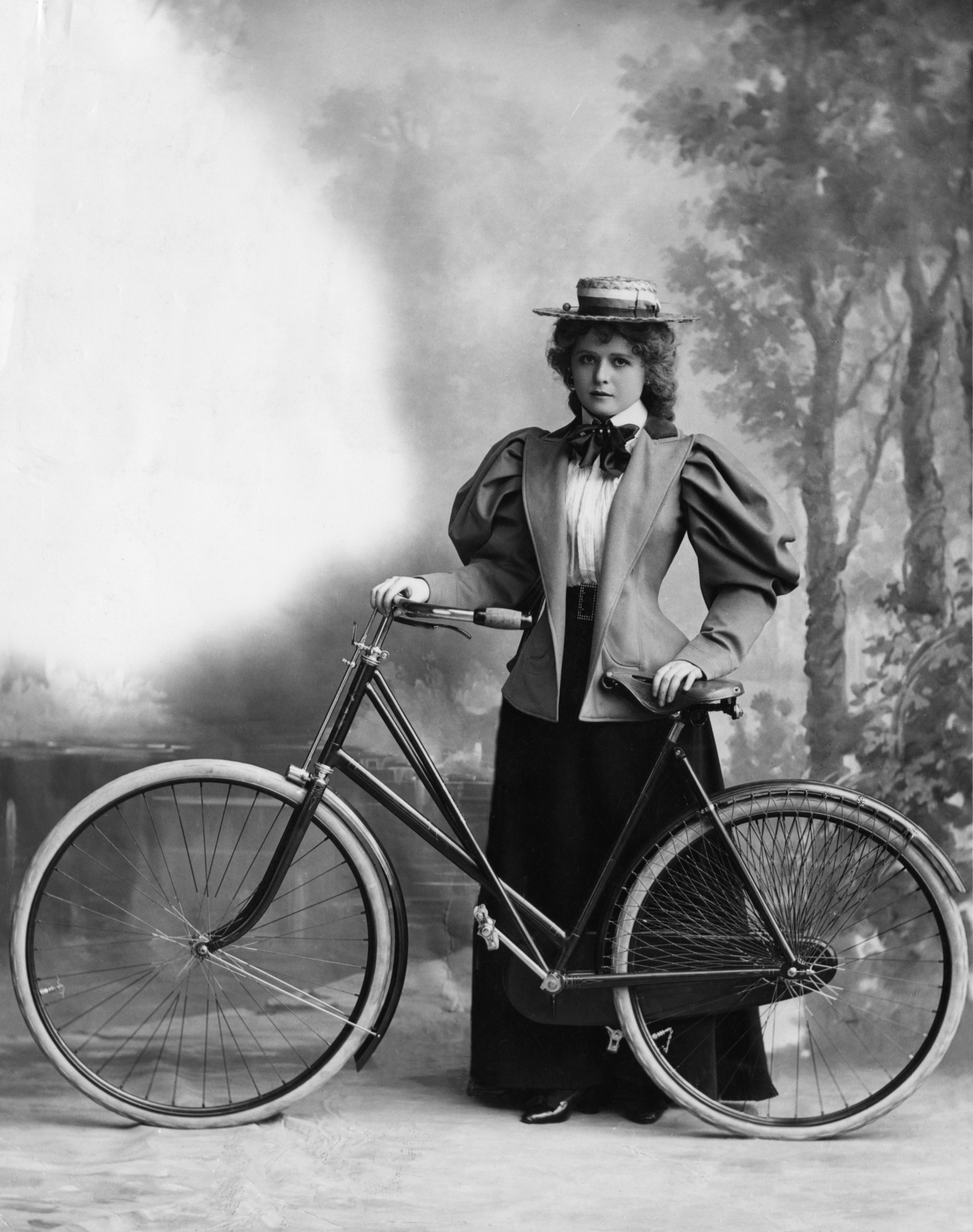|
Mandilion
A mandilion or mandelion is a loose men's hip-length pullover coat or jacket, open down the sides, worn in England in late sixteenth century. It was fashionable to wear the mandilion ''colly-westonward'' or ''Colley-Weston-ward'', that is, rotated 90 degrees so that the front and back were draped over the arms and the sleeves hung down in front and behind. :"...sithence such is our mutability that to-day there is none to the Spanish guise, to-morrow the French toys are most fine and delectable, ere long no such apparel as that which is after the high Almaine fashion, by-and-by the Turkish manner is generally best liked of, otherwise the Morisco gowns, the Barbarian fleeces, the mandilion worn to Colley-Weston ward, and the short French breeches make such a comely vesture that, except it were a dog in a doublet, you shall not see any so disguised as are my countrymen of England." - William Harrison, ''The Description of Elizabethan England'' (1577), 'Of Our Apparel and Attire'. W ... [...More Info...] [...Related Items...] OR: [Wikipedia] [Google] [Baidu] |
Collyweston
Collyweston is a village and civil parish in North Northamptonshire, about three miles southwest of Stamford, Lincolnshire, on the road (the A43) to Kettering. The population of the civil parish at the 2011 census was 514. Geography The village is on the southern side of the Welland valley east of Tixover. The River Welland, at the point nearby to the northwest, is the boundary between Rutland and Northamptonshire. British Railways closed Ketton and Collyweston railway station in 1966. Collyweston is currently served by buses on the Stamford to Peterborough ''via'' Duddington route. The Jurassic Way and Hereward Way pass through the village to the north, crossing the Welland at Collyweston Bridge, near Geeston. The A47 road passes through the parish to the south, with Collyweston Great Wood to the south. The road from the A47, continuing in a straight line to the village is called Kingscliffe Road. Nature reserve The local Wildlife Trust has a fifteen-acre nature reserv ... [...More Info...] [...Related Items...] OR: [Wikipedia] [Google] [Baidu] |
Chaperon (headgear)
A chaperon ( or ; Middle French: ''chaperon'') was a form of hood or, later, highly versatile hat worn in all parts of Western Europe in the Middle Ages. Initially a utilitarian garment, it first grew a long partly decorative tail behind called a liripipe, and then developed into a complex, versatile and expensive headgear after what was originally the vertical opening for the face began to be used as a horizontal opening for the head. It was especially fashionable in mid-15th century Burgundy, before gradually falling out of fashion in the late 15th century and returning to its utilitarian status. It is the most commonly worn male headgear in Early Netherlandish painting, but its complicated construction is often misunderstood. Humble origins The chaperon began before 1200 as a hood with a short cape, put on by pulling over the head, or fastening at the front. The hood could be pulled off the head to hang behind, leaving the short cape round the neck and shoulders. The e ... [...More Info...] [...Related Items...] OR: [Wikipedia] [Google] [Baidu] |
Robert Sidney, 1st Earl Of Leicester From NPG
The name Robert is an ancient Germanic given name, from Proto-Germanic "fame" and "bright" (''Hrōþiberhtaz''). Compare Old Dutch ''Robrecht'' and Old High German ''Hrodebert'' (a compound of '' Hruod'' ( non, Hróðr) "fame, glory, honour, praise, renown" and '' berht'' "bright, light, shining"). It is the second most frequently used given name of ancient Germanic origin. It is also in use as a surname. Another commonly used form of the name is Rupert. After becoming widely used in Continental Europe it entered England in its Old French form ''Robert'', where an Old English cognate form (''Hrēodbēorht'', ''Hrodberht'', ''Hrēodbēorð'', ''Hrœdbœrð'', ''Hrœdberð'', ''Hrōðberχtŕ'') had existed before the Norman Conquest. The feminine version is Roberta. The Italian, Portuguese, and Spanish form is Roberto. Robert is also a common name in many Germanic languages, including English, German, Dutch, Norwegian, Swedish, Scots, Danish, and Icelandic. It ... [...More Info...] [...Related Items...] OR: [Wikipedia] [Google] [Baidu] |
Coat (clothing)
A coat typically is an outer garment for the upper body as worn by either gender for warmth or fashion. Coats typically have long sleeves and are open down the front and closing by means of buttons, zippers, hook-and-loop fasteners, toggles, a belt, or a combination of some of these. Other possible features include collars, shoulder straps and hoods. Etymology ''Coat'' is one of the earliest clothing category words in English, attested as far back as the early Middle Ages. (''See also'' Clothing terminology.) The Oxford English Dictionary traces ''coat'' in its modern meaning to c. 1300, when it was written ''cote'' or ''cotte''. The word coat stems from Old French and then Latin ''cottus.'' It originates from the Proto-Indo-European word for woolen clothes. An early use of ''coat'' in English is coat of mail (chainmail), a tunic-like garment of metal rings, usually knee- or mid-calf length. History The origins of the Western-style coat can be traced to the sl ... [...More Info...] [...Related Items...] OR: [Wikipedia] [Google] [Baidu] |
England
England is a country that is part of the United Kingdom. It shares land borders with Wales to its west and Scotland to its north. The Irish Sea lies northwest and the Celtic Sea to the southwest. It is separated from continental Europe by the North Sea to the east and the English Channel to the south. The country covers five-eighths of the island of Great Britain, which lies in the North Atlantic, and includes over 100 smaller islands, such as the Isles of Scilly and the Isle of Wight. The area now called England was first inhabited by modern humans during the Upper Paleolithic period, but takes its name from the Angles, a Germanic tribe deriving its name from the Anglia peninsula, who settled during the 5th and 6th centuries. England became a unified state in the 10th century and has had a significant cultural and legal impact on the wider world since the Age of Discovery, which began during the 15th century. The English language, the Anglican Church, and Eng ... [...More Info...] [...Related Items...] OR: [Wikipedia] [Google] [Baidu] |
Sleeve
A sleeve ( ang, slīef, a word allied to '' slip'', cf. Dutch ) is the part of a garment that covers the arm, or through which the arm passes or slips. The sleeve is a characteristic of fashion seen in almost every country and time period, across a myriad of styles of dress. Styles vary from close-fitting to the arm, to relatively unfitted and wide sleeves, some with extremely wide cuffs. Long, hanging sleeves have been used variously as a type of pocket, from which the phrase "to have up one's sleeve" (to have something concealed ready to produce) comes. There are many other proverbial and metaphorical expressions associated with the sleeve, such as "to wear one's heart upon one's sleeve", and "to laugh in one's sleeve". Early Western medieval sleeves were cut straight, and underarm triangle-shaped gussets were used to provide ease of movement. In the 14th century, the rounded sleeve cap was invented, allowing a more fitted sleeve to be inserted, with ease around the sleeve ... [...More Info...] [...Related Items...] OR: [Wikipedia] [Google] [Baidu] |
William Harrison (clergyman)
William Harrison (18 April 1534 – 24 April 1593) was an English clergyman, whose ''Description of England'' was produced as part of the publishing venture of a group of London stationers who produced Raphael Holinshed's '' Chronicles'' (1577 and 1587). His contribution to Holinshed's work drew heavily on the earlier work of John Leland. Biography Early life and education William Harrison was born in London, in the parish of St. Thomas the Apostle, to John and Anne Harrison. As a boy, Harrison attended St Paul's School and the Westminster School of Alexander Nowell. Raised in Protestant circles, Harrison entered Christ Church, Oxford and in 1560 was awarded his bachelor's degree. During the reign of Queen Mary I of England, Christ Church became a centre of Catholic support, and Harrison converted to Catholicism. Harrison claimed that he returned to Protestant belief before Mary's death in 1558 after hearing the words of Cranmer, Ridley, and Latimer, three Protestant mar ... [...More Info...] [...Related Items...] OR: [Wikipedia] [Google] [Baidu] |
Northamptonshire
Northamptonshire (; abbreviated Northants.) is a county in the East Midlands of England. In 2015, it had a population of 723,000. The county is administered by two unitary authorities: North Northamptonshire and West Northamptonshire. It is known as "The Rose of the Shires". Covering an area of 2,364 square kilometres (913 sq mi), Northamptonshire is landlocked between eight other counties: Warwickshire to the west, Leicestershire and Rutland to the north, Cambridgeshire to the east, Bedfordshire to the south-east, Buckinghamshire to the south, Oxfordshire to the south-west and Lincolnshire to the north-east – England's shortest administrative county boundary at 20 yards (19 metres). Northamptonshire is the southernmost county in the East Midlands. Apart from the county town of Northampton, other major population centres include Kettering, Corby, Wellingborough, Rushden and Daventry. Northamptonshire's county flower is the cowslip. The Soke of Peterborough fall ... [...More Info...] [...Related Items...] OR: [Wikipedia] [Google] [Baidu] |
Coats (clothing)
Coats may refer to: People * Coats (surname) Places * Coats, Kansas, US * Coats, North Carolina, US * Coats Island, Nunavut, Canada * Coats Land, region of Antarctica Other uses * Coat (clothing), an outer garment *Coats' disease Coats' disease is a rare congenital, nonhereditary eye disorder, causing full or partial blindness, characterized by abnormal development of blood vessels behind the retina. Coats' disease can also fall under glaucoma. It can have a similar p ..., a human eye disorder * Coats Mission, British military mission 1941–42 * Coats Group, a multinational sewing and needlecraft supplies manufacturer * Coats Steam Car, American automobile manufactured 1922–23 * Stewart-Coats, American automobile manufactured only in 1922 * Cadet Organizations Administration and Training Service, a sub-component of the Canadian Forces Reserves See also * Coat (other) * Coates (other) * Cotes (other) {{disambig ... [...More Info...] [...Related Items...] OR: [Wikipedia] [Google] [Baidu] |
History Of Clothing (Western Fashion)
The study of the history of clothing and textiles traces the development, use, and availability of clothing and textiles over human history. Clothing and textiles reflect the materials and technologies available in different civilizations at different times. The variety and distribution of clothing and textiles within a society reveal social customs and culture. The wearing of clothing is exclusively a human characteristic and is a feature of most human societies. There has always been some disagreement among scientists on when humans began wearing clothes, but studies involving the evolution of body lice suggest it started sometime around 170,000 years ago. Anthropologists believe that animal skins and vegetation were adapted into coverings as protection from cold, heat, and rain, especially as humans migrated to new climates. Textile history is almost as old as human civilization, and as time has passed, the history of textile has been more enriched. Silk weaving was introdu ... [...More Info...] [...Related Items...] OR: [Wikipedia] [Google] [Baidu] |






